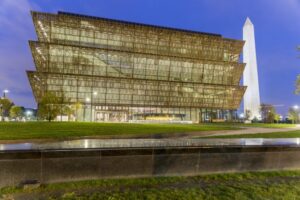Shared Authority in Historical Research: A New Era of Collaboration and Inclusion
What is Shared Authority?
In the realm of historical research and scholarship, “shared authority” refers to the collaborative process where historians and other stakeholders—such as community members, local experts, or descendants of those being studied—contribute equally to the creation and interpretation of historical knowledge. This concept challenges the traditional hierarchical model of scholarship, where experts hold the sole authority over research and narratives. Shared authority aims to democratize history, ensuring that multiple voices are heard and valued in the research process.
How Does It Impact Historical Research, Scholarship, and Exhibition?
The concept of shared authority profoundly impacts how history is researched, interpreted, and presented. By engaging communities in the process, shared authority introduces new perspectives, challenges dominant historical narratives, and enriches historical scholarship. As historian Lauret Savoy argues in her work, the inclusion of diverse voices in the research process not only creates a more accurate and nuanced understanding of history but also empowers communities to reclaim and tell their own stories. This approach emphasizes the importance of local knowledge and lived experiences, giving authority to those who have historically been marginalized.
Shared authority transforms historical exhibitions by incorporating community input into the design and content of museums or public history projects. For example, exhibitions that include the perspectives of Indigenous groups, African American communities, or other marginalized populations ensure that their histories are not reduced to footnotes in mainstream narratives but are told in their own words.
Connecting Shared Authority to Current Events and Public History Projects
A powerful example of shared authority in action can be seen in the recent Smithsonian National Museum of African American History and Culture. The museum actively involves the African American community in the curating process, ensuring that exhibits reflect the experiences and voices of those directly affected by the events. By incorporating community members in the development of the museum’s exhibits, the museum fosters a deeper connection to the past, encouraging visitors to experience history in a way that is both educational and emotionally resonant.
Additionally, the National Parks Service and its recent initiative to reframe the narratives around American slavery and Indigenous rights offer another example of shared authority at work. This initiative includes input from descendant communities and local historians, ensuring that exhibitions reflect more than just the perspectives of policymakers or academic historians. This is a critical step in ensuring that the national narrative evolves in ways that are inclusive and accurate.
Photo of the Smithsonian National Museum of African American History and Culture
- SmithsonianAfricanAmericanMuseumD.C-scaled
Conclusion
Shared authority transforms historical research, scholarship, and exhibitions by making them more inclusive and reflective of diverse perspectives. By embracing collaboration and valuing community contributions, historians, scholars, and institutions move toward a more equitable and authentic portrayal of the past. As the world continues to reckon with issues of race, identity, and historical injustice, shared authority offers a promising path toward a more just and comprehensive understanding of history.
By reflecting on shared authority in both research and public exhibitions, we open the door to a richer, more inclusive dialogue around history—one that highlights the importance of collaboration and diverse perspectives in our understanding of the past.
